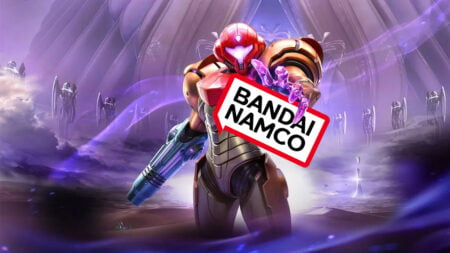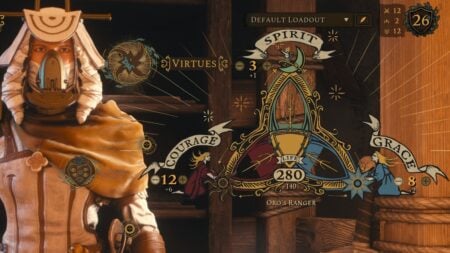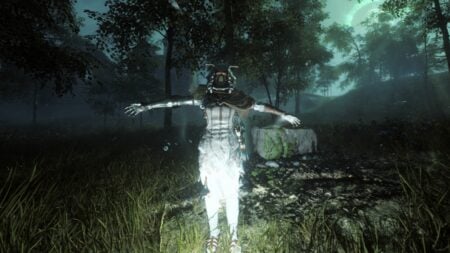Skip To...
Upon seeing the first trailers for Lies of P, many people quickly compared it to Bloodborne. Although this title takes a lot of inspiration from the aforementioned, Lies of P is a fantastic soulslike game with gameplay that is challenging and unique in its own way. Writing the review of Lies of P has been one of the most fun things I’ve done this year after Elden Ring left a big void in me, and I can confidently say that Neowiz’s new game has managed to fill it.
Lies of P Review: Lie or Die
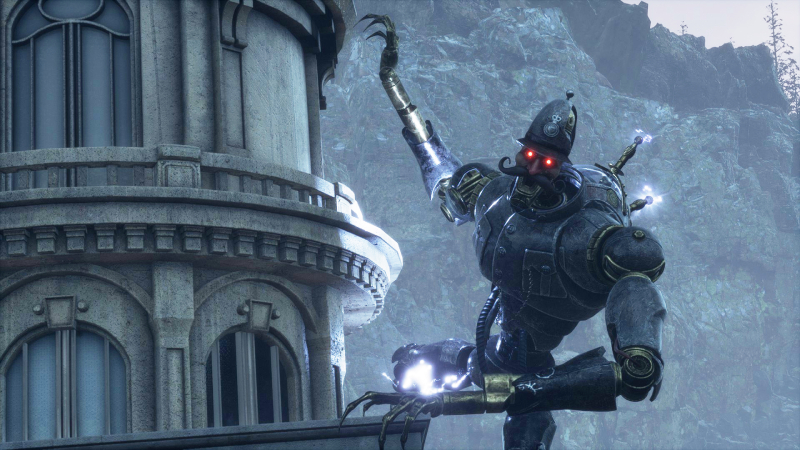
Today, many games in the Soulslike genre try to make their mark uniquely; even when many fail, Lies of P succeeds spectacularly. There are always debates about what makes a Soulslike game an experience akin to the iconic Dark Souls. Many consider factors like grim art direction, punishing combat, stunningly designed boss fights, or the flexibility to build one’s character in a variety of ways. If that’s the case, Lies of P ticks all these boxes. The time I spent on this Lies of P review made me see that the game replicates the perfect formula that FromSoftware games have established and stays original by adding things that set the game apart from others.
Story: A Not-So-Classical Fairy Tale

In case you don’t know, the game’s story is based on the work of Carlo Collodi, the author of the classic tale of Pinocchio. In the story of Lies of P, you will see many recognizable characters directly related to the book and its adaptations. Although prior knowledge of the source material makes the experience more enjoyable, even those who’ve never heard of the fairytale can still enjoy it due to its originality.
Lies of P begins with our protagonist waking up on a train. After exploring the train station and defeating the first boss, we go to the Krat Hotel, a central hub similar to the Roundtable Hold in Elden Ring. The story of Lies of P reminded me first of “I, Robot” in how it deals with the danger of robots and artificial intelligence getting out of control and attacking the ones they are sworn to serve. However, many more things behind this plot surprised me with its twists and turns.
Geppetto created the puppets that now serve Krat’s humans, but an event called “The Puppet Frenzy” caused them all to go wild and start attacking their masters. Therefore, the only one able to stop this event and get to the bottom of it is Pinocchio, a puppet like no other.

Pinocchio is unique because he is not bound by the Grand Covenant, rules other puppets follow to avoid hurting humans. If you’re familiar with Isaac Asimov’s laws of robotics, they are practically identical. The fact Pinocchio can operate outside of these rules makes the story interesting as it shows the dichotomy between good and evil or, rather, being a human or a mechanical puppet.
Krat is where the game takes place and the story unfolds. This city has different districts with distinct, stylized environments. You’ll walk the streets of the wealthy and cross through poor peasant villages. There’s even a swamp that serves as a cemetery for puppets. All of these areas are guarded by a unique boss.
Ergo is a mystical energy that powers everything in Krat, including the puppets. Similar to Souls or Runes, it’s the resource you’ll need to level up and enhance Pinocchio. As the narrative progresses, we learn that Ergo is more than just a substance, and the plot revolves around finding out why this rare energy is causing so much havoc and causing the puppets to disobey their laws.
Although the game is a Soulslike experience, it does not share the ambiguity in its narrative, like other notable games of the genre. The linear presentation makes it easy to digest, and even if it’s not your cup of tea, the game has one of the best stories I’ve seen in any Soulslike title thanks to its memorable characters and presentation. Lies of P made what I thought was impossible: compelling me to care for the story in a Soulslike game.
Gameplay: Like Clockwork
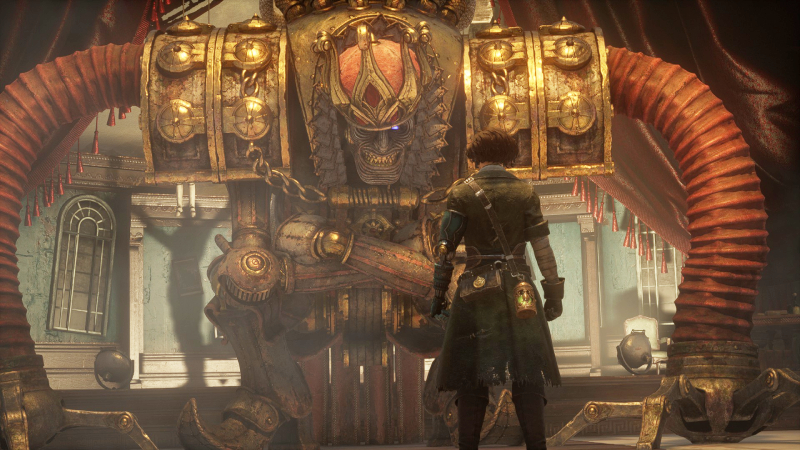
As a Soulslike game, Lies of P upheld its inspired gameplay throughout my playthrough, as all relevant mechanics stayed consistently intact in gameplay from start to finish. At first, the experience felt like Bloodborne but eventually became an amalgamation of Bloodborne and Sekiro. While I’ve mentioned FromSoftware’s franchises multiple times, this company is the inspiration for the genre. Therefore, it’s necessary to understand that before discussing the gameplay of Lies of P.
Lies of P has everything that makes a gameplay experience a Soulslike game. The control mapping is essentially the same. Light attacks with R1/RB, heavy with R2/RT, and dodge with circle or B. When you die, you leave behind the Ergo you gained up until that point. Every time you level up, you assign points to specific stats, and upgrading weapons requires different materials. Those who are familiar with Elden Ring should feel at home.
To start with comparisons, let’s talk about Bloodborne‘s rally system, from which Lies of P takes a lot of inspiration. In Bloodborne, you can attack an enemy to recover a certain portion of lost HP. In Lies of P, we have the Guard Regain mechanic. This mechanic works almost the same as in Bloodborne; the difference here is that it is only activated if you block an attack. By blocking, you can attack the enemy and recover some of your health. If you get hit without guarding, your HP will be depleted. This is how the game invites you to be more aggressive after defending yourself, which is more effective than simply dodging.
The combat in Lies of P reminded me of Sekiro because of the parry system. As the shinobi protagonist Wolf, you fought opponents in a synchronized dance. Learning when the enemies attack is essential to time your blocks for counterattacking. Something similar happens here. Enemies don’t have a stance bar to break explicitly; instead, it is hidden. After blocking them continuously or attacking many times, the enemy’s HP bar glows white. A charged attack will stagger them, letting you deliver a critical hit.
This is one of the hardest of all the non-FromSoftware games I’ve played. After being spoiled by many things in Elden Ring, this game reminded me that skill and patience are necessary to succeed in a Soulslike. The bosses have very erratic attack patterns, and when you think you’ve learned everything, they unleash new moves. This is when I realized this game takes something that already exists and gives it a life of its own thanks to the engaging encounters. For me, that is the essence of a game of this type; it challenges you, and you’ll lose because of that. However, it’s never punishing to the point you won’t want to return.
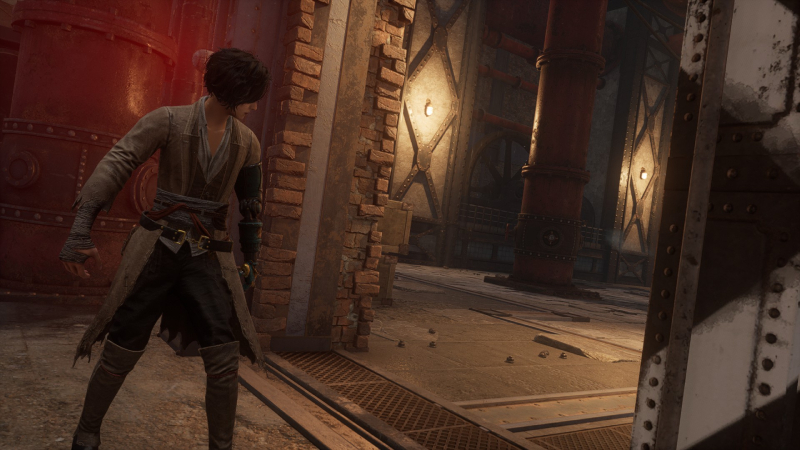
Speaking of bosses, they are all fantastic, and beating them is gratifying. Each one has its distinctive designs and mechanics. What surprised me is that, although they are not that complicated at the beginning, you realize that Lies of P does not mess around when you encounter the first boss with two phases. The challenging part is not only the bosses, though. Every enemy and mini-boss can kill you in seconds, making combat challenging at every turn.
In addition to the systems we have come to expect, other modern features have been added. My favorite during this Lies of P review process was the weapon assembly. Each normal weapon has a handle and a blade. You can separate the two components to create something new. At first, there isn’t much to grab from. But the more weapons you find, the more combinations you can make. My favorite was a spear I made that had the blade of a fire dagger. I used this weapon the whole game, and it helped me against most enemies.
If you think the game caters to those who prefer melee combat, there is something similar to magic. In Lies of P, the equivalent of magic is Legion. Instead of having spells, you can modify Pinocchio’s left arm, known as his Legion Arm. You can change these arms at checkpoints, and each one works differently. One throws electricity and is effective against puppets, another works as a shield, and there are many more with different functionalities.
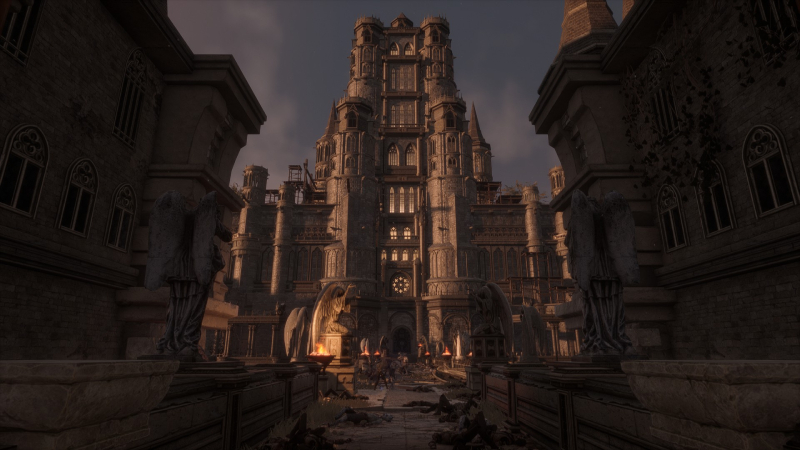
The P-Organ or talent tree is something I didn’t like initially. After defeating certain bosses or completing particular quests, you get Quartz. This element allows you to assign it to specific slots that give you bonuses in the game. Some give you extra health potions, and others will enable you to dodge faster. I didn’t like this system because I felt many mechanics that should be in the game from the get-go weren’t, such as dodging continuously or getting up fast from the ground after being knocked out. As a result, I felt restricted from experimenting with some builds I would have liked to try.
Finally, there is one distinctive system in this game. Lies of P has a mechanic of truth and lies. Certain missions will make you choose between two options: a truth and a lie. Your rewards and interactions with NPCs will change depending on what you say. At one point, I encountered a man who wanted me to help him look for his deceased wife. Upon finding her, I realized she was a puppet. I got her engagement ring with a note. Upon returning, I could tell him what was in the note or lie. These choices change the course of many characters’ fates and shape the story differently.
Graphics and Audio: Hauntingly Beautiful
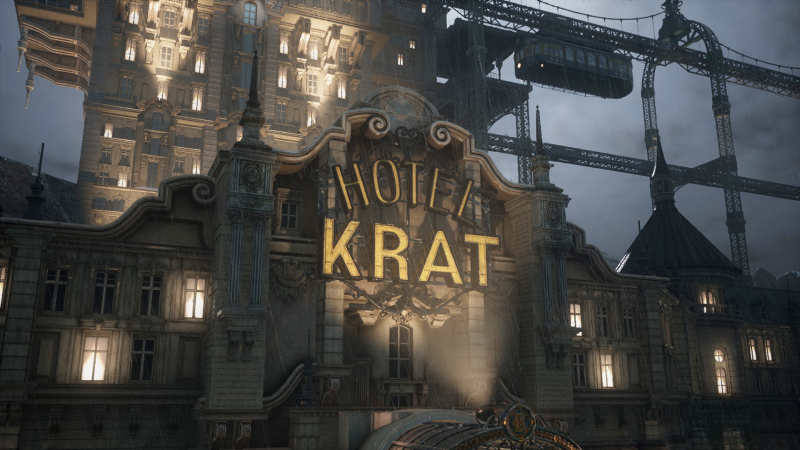
Initially, I thought Lies of P would be the same as Bloodborne regarding its art direction. The truth is that in terms of visuals and graphics, it reminded me more of Bioshock Infinite. The gothic and luxurious style of certain areas is indeed very similar to Yharnam in Bloodborne. But in reality, all other sections were more similar to the neoclassical style of Columbia in Bioshock Infinite. Combining a classic look with machinery that adds steampunk flair to the city is a sight to behold.
It is worth noting that the bosses have unforgettable designs. Similar to other games of the genre, you will find bosses that are three times bigger than you, inducing fear with their intimidating size. From puppet bosses to other plague-infected beings roaming Krat, each one is original and something I hadn’t seen before.
In terms of performance, there is no major problem. I played the game on PC at the highest settings. At no time did I feel that the game had any stutter. The game compiles shaders at startup, but it is very fast. One minor issue I noticed occasionally in specific areas was the texture loading. Sometimes, it took a while for some textures to appear, but it happened a few times and wasn’t game-breaking. The time I spent during this Lies of P review process was smooth, and this is one of the most optimized games of this year.
The music is simply beautiful. Each piece of music managed to evoke feelings of nostalgia and sadness. Add to that the dynamic range of the audio on the streets, and you feel dread as you wander through empty homes within a city filled with death. Likewise, the boss music tracks didn’t fall behind. When I faced one of the first bosses with two phases, the music enhanced the thrill of the battle, elevating the fight against the one behind the Puppet Frenzy. All this reminded me of how FromSoftware handles audio in their titles, and Lies of P does it equally well.
Conclusion: A Game With No Strings
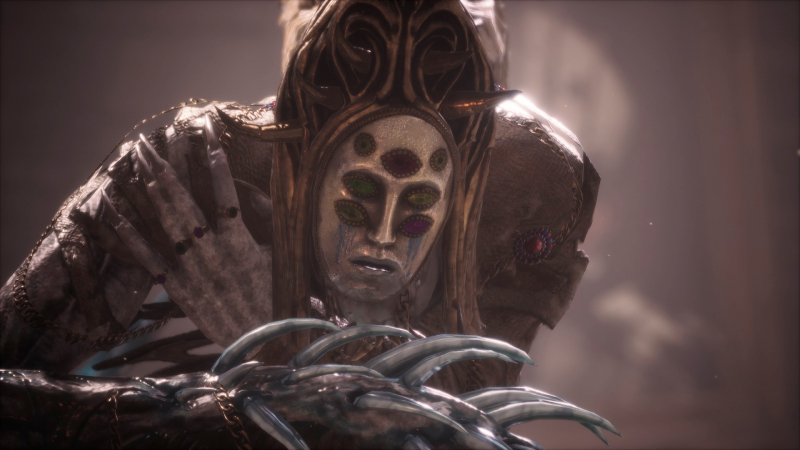
Like this review and many others, people will soon compare Lies of P to Bloodborne and other Miyazaki games for the game’s astounding narrative and gameplay. And even though many things are almost identical, the game has distinction. The art separates it from many other games in the genre that we’ve seen. The gameplay sticks to its roots while also bringing modern features that don’t drift away from the essence of the genre. The story is the most compelling one I’ve experienced in these types of games.
Without a doubt, Lies of P is the best Soulslike game of the year. It’s been a long time since I’ve seen bosses this imposing and difficult. No other recent experience has given me the gratification of beating a boss after more than twenty tries like this one does. Veterans of Souls games are going to love every minute of their adventure. For those new to the genre, I highly recommend it as it brings all the features you might expect from these games but with a modern take. Lies of P has a distinctive imprint by creating a world full of fun fights, memorable locations, and secrets that I look forward to returning to even after this review.
Related:
Armored Core VI: Fires of Rubicon Review – Beautiful Destruction
Lies of P is available now on PlayStation,
Review copy provided by Publisher.
Lies of P (PC Reviewed)
Lies of P is the best soulslike in the market that captures the feel of the games it takes inspiration from while remaining original.
Pros
- The best Soulslike in the market to date.
- Marvelous enemy design.
- Slick and methodical combat.
Cons
- A few systems might be confusing for newcomers.


